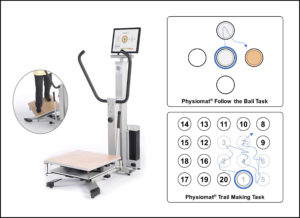
From spelling apps on iPads for elementary school students to golf-swing simulators on Xboxes for country club dads, electronic gaming has proven an effective tool for learning, intellectual and physical engagement, and performance enhancement for all ages and across all disciplines.
The popularity of this training method can be attributed to its entertaining, playful, and competitive aspects, which amplify the user’s motivation to learn and improve performance. However, the application of these devices goes much further than learning to spell and fixing your golf swing. The progressive, interdisciplinary expansion of this technology is exemplified in the use of exergaming, or exercise-gaming, as a potential rehabilitative option for cognitively impaired patients and patients with dementia.
Exergaming for patients with dementia

Dementia has a significant impact on attention, especially on aspects of divided attention and attentional control. Both of these are necessary for individuals to effectively perform cognitive and motor activities simultaneously, like having a conversation while walking or keeping balance on the subway while reading a book.
Under these conditions, often referred to as motor-cognitive dual-task scenarios, cognitively impaired patients, like those with dementia, show markedly reduced physical functions compared to cognitively healthy adults. This puts them at severe risk for falls and overall functional decline.
Dual-task training methods, like exergaming, work to improve motor-cognitive performance in these situations. Exergaming does this by combining cognitive and physical exercise in an interactive, game-based way. It requires individuals to complete cognitively challenging tasks directly embedded within the physical body movements required to complete the games tasks projected on the screen.

Clinical studies clearly point to a cumulative improvement in dementia patients’ motor-cognitive performances after exergaming. However, these studies focused on the general, cumulative effects at the end of the exergame training period in the total patient group. Therefore, not much is known about the optimal duration of training or the differences in training response among individual patients.
The aim of this study was to identify both the necessary time-course required to achieve improvements in complex dual-task performances and the existence of any characteristics associated with early training response in patients with mild to moderate dementia.
Testing the patients’ exergaming performance
To accomplish these goals, the researchers tested the performance of dementia patients in two kinds of exergaming tasks biweekly for ten weeks: the Physiomat® Follow the Ball Task (FTBT), and the Physiomat® Trail Making Tasks (PTMTs).

By bending, tilting, and rotating on a balance platform, the patient controlled and moved a cursor on a computer screen to either “catch” a moving ball (FTBT) or connect digits in a specified order (PTMTs). The researchers measured the effects four times throughout training and recorded the patients’ characteristics like age, sex, history of falls, motor status, cognitive functioning, etc.
After analyzing the data, the researchers observed that the patients’ exergame performances showed significant improvements in all Physiomat® tasks after just three weeks (seven training sessions). The researchers also discovered that the patients with the lowest preliminary exergame performance and the greatest deficits in training-related cognitive functions, benefited the most and the fastest from the exergaming intervention.
However, they noticed that the rate of improvement was not linear, as the training effects seemed to plateau after that first three week phase. Further studies could focus on the intensity and frequency of the training, as increasing these factors could lead to a continued increase in performance past the first three weeks.
The future of exergaming use for neurodegenerative diseases
The results of this research support further study of the benefits of exergaming in the dementia population as well as in patients affected by other neurodegenerative diseases. Additionally, the study contains important implications for the treatment of the cognitively impaired.

Dementia is a debilitating disease that targets the most vulnerable populations and has irreparable impacts on the lives of its victims and their families. As nutrition, medicine, and technology improve and advance, life expectancy will continue to rise, as will the number of people affected by dementia. In fact, The World Health Organization (WHO) estimates that dementia’s prevalence will almost triple by 2050, increasing the total number of cases to 152 million worldwide.
Consequently, it is extremely important that rehab facilities and hospitals allocate the correct resources to the treatment of those with these diseases as well as towards learning more about their causes. By identifying the time course and optimal training use of exergaming, this study takes major strides towards that balance and sets forth a template for how research on electronic training treatment options should be conducted.
Comments